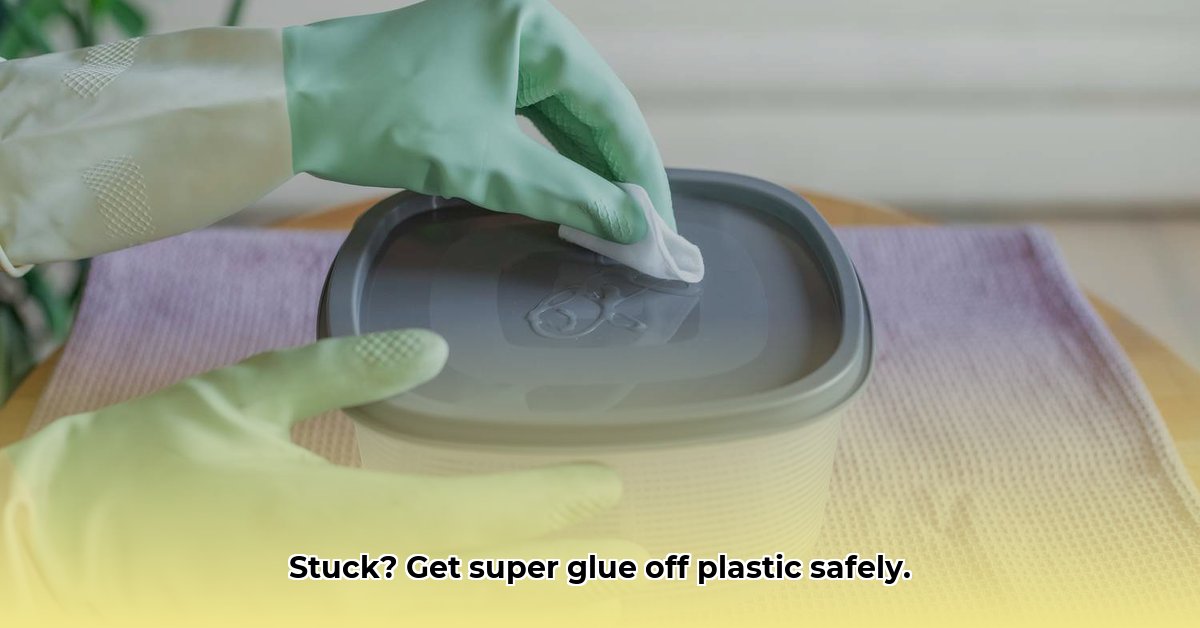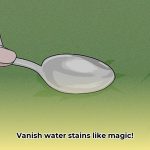Uh-oh, super glue mishap? Don’t panic! This comprehensive guide provides safe and effective methods to remove super glue from plastic, from simple household solutions to more specialized techniques. We’ll help you choose the best approach for your specific plastic type and offer tips to prevent future sticky situations.
Summary of Super Glue Removal Methods
| Method | Effectiveness | Safety | Recommended Plastic Types | Notes |
|---|---|---|---|---|
| Soapy Water | Low | High | Most | Best for delicate plastics and fresh glue. |
| Oil (e.g., Olive Oil) | Medium | High | Most | Gentle and effective for smaller glue spots. |
| Commercial Glue Remover | Medium-High | Moderate | Follow product instructions | Effective but can be expensive; always test first. |
| Acetone/Nail Polish Remover | High | Moderate | Test first; ABS, Acrylic | Powerful solvent; can damage some plastics; test in a hidden spot! |
| Isopropyl Alcohol | Medium-High | Moderate | Test first | Gentler than acetone; still test first! |
| Mechanical Removal | Varies | Low | Varies | Use only after softening glue with another method. |
| Heat (Hair Dryer) | Low-Medium | Moderate | Heat-Resistant Plastics | Softens glue; use cautiously to avoid melting or warping. |
Step-by-Step Removal Instructions
1. The Gentle Soak (Soap and Water)
This method is your safest bet, especially for delicate plastics and skin.
- Prepare: Fill a container with warm water and add dish soap.
- Submerge: Gently place the glued plastic item in the soapy water, ensuring the affected area is fully submerged.
- Soak: Let it soak for 30-60 minutes. Longer soaks may be necessary for stubborn glue.
- Remove: Gently peel or roll the softened glue. A soft-bristled toothbrush can help.
Why this might work: Soaking weakens the adhesive bond by hydrating the cured glue, potentially making it more pliable.
2. Oil Treatment (e.g., Olive Oil)
Olive oil and other oils can soften super glue.
- Apply: Generously coat the glue with olive oil.
- Wait: Let the oil sit for 15-20 minutes.
- Remove: Gently work the softened glue loose with a soft cloth, cotton swab, or dull plastic scraper.
Why this might work: Oil can penetrate and lubricate the glue, reducing its adhesion to the plastic.
3. Commercial Glue Removers
These are designed to dissolve cyanoacrylate, the main ingredient in super glue.
- Test: Crucially, test the remover on a hidden area of the plastic first.
- Apply: If the test is successful, apply the remover to the glue, following the manufacturer’s instructions exactly.
- Remove: After the glue softens (per the instructions), gently pry or peel it away with a plastic tool.
Why this might work: Commercial removers contain solvents specifically formulated to break down cyanoacrylate bonds.
4. Acetone or Nail Polish Remover
Acetone is a powerful solvent. Use with extreme caution!
- Test: Apply a small amount to a hidden area first. Some plastics react badly to acetone.
- Apply: If safe, apply acetone to the glue with a cotton swab, avoiding the surrounding plastic.
- Soften: Let the acetone sit briefly.
- Remove: Gently rub the softened glue away. Repeat if necessary.
Why this might work (and why it’s risky): Acetone dissolves cyanoacrylate but can also damage certain plastics.
5. Isopropyl Alcohol
A somewhat gentler alternative to acetone, but still requires testing.
- Test: Apply a small amount to a hidden area to ensure compatibility.
- Apply: If safe, apply to the glue with a cotton swab, avoiding surrounding areas.
- Soften: Allow a few minutes for the alcohol to soften the glue.
- Remove: Gently rub the softened glue away.
Why this might work: Like acetone, isopropyl alcohol can dissolve cyanoacrylate, but it is less aggressive.
6. Heat (Hair Dryer)
A hairdryer on a low setting can soften super glue, making other methods more effective.
- Apply Heat: Gently warm the glued area with a hairdryer on a low setting. Avoid excessive heat, which can melt or warp the plastic.
- Remove: Try removing the softened glue with your fingernail or a plastic scraper.
Why this might work: Heat can soften the glue’s structure, making it more pliable.
7. Mechanical Removal (Last Resort)
Only attempt mechanical removal after softening the glue with another method.
- Choose a Tool: Use a plastic scraper, an old credit card, or your fingernail. Avoid metal tools, which can scratch.
- Scrape Gently: Carefully scrape or peel the softened glue. Use minimal pressure.
Why this is risky: Scraping dried super glue can damage the plastic.
Prevention Tips
- Work Area: Cover your work surface with newspaper or cardboard.
- Applicators: Use applicator tips or toothpicks for precise glue application.
- Gloves: Protect your skin with gloves.
- Ventilation: Work in a well-ventilated area, especially when using solvents.
- Storage: Store super glue properly, away from children and pets.
FAQs
- What if the glue is old? Older glue is tougher to remove. Soaking methods are most likely to be effective, often requiring longer soak times and repeated attempts.
- Can I use these methods on [specific plastic type]? Always test any method on an inconspicuous area first. Some plastics are more sensitive than others. Online resources may provide further information about specific plastic types.
By understanding your plastic and the removal method, you can likely remove the super glue without causing damage. Remember to prioritize safety and always test in a hidden area first. If you’re uncertain about any method, err on the side of caution or consult a professional. Ongoing research continually suggests improvements in adhesive technology and removal techniques, so staying updated is always a good idea.
- How to Measure Your Belt Size (for Women): 3 Easy & Accurate Methods - April 27, 2025
- How to Remove Permanent Hair Dye From Hair: Safe & Effective Methods - April 27, 2025
- How to Remove Ink from Leather: Effective DIY Methods and Expert Tips - April 27, 2025










